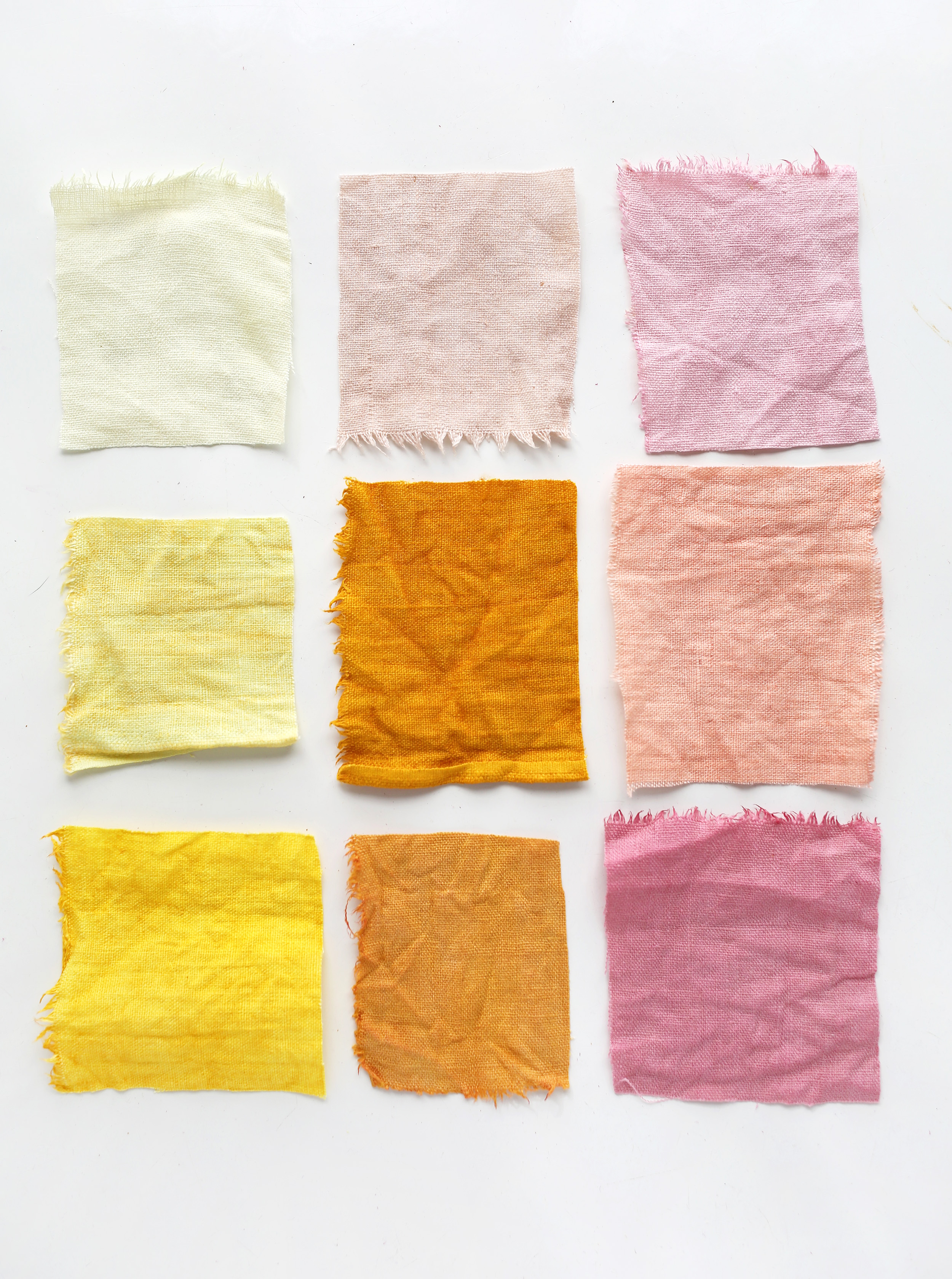Natural Pigment Basics

Natural Dying 101:
Types of dyes:
substantive/ direct dyes– do not require an addition of an extra substance to adhere to the fiber
adjective/ mordant dyes- require a mordant to adhere
Mordants- water soluble chemicals (typically metallic salts) that increase the bond between the dye and the fabric
*Mordant procedures used for animal and plant fibers are not interchangeable as each requires specific dying care.
Two types of dying fibers:
Animal (protein) fibers: wool, hair, silk
Plant (cellulose) fibers: cotton, linen, hemp
*it is easier to start dying with protein fibers like wool and silk than with cellulose fibers like cotton and linen.
Weight of Fiber (WOF): all measurements are based off of this number. The weight of dyestuff is
measured in WOF and will determine how much materials are needed.
Weight of Fibre x % = Weight of Dyestuff
Ex: To dye a medium-red with madder, we would use 50% WOF.
If we had a pound of cotton we would need a half-pound of madder.
1lb x .5 = .5lb (8 oz)
Quick Tips:
- After dying rinse out fabrics with PH neutral soap as not to change the dye color
- After dying fabrics need to be dried out of direct sunlight to avoid color fading.
- Run smaller test samples before using all your materials, and additionally keep records while experimenting with dyes.
- Always use clean non-reactive vessels: stainless steel, un-chipped enamel, glass, or plastic